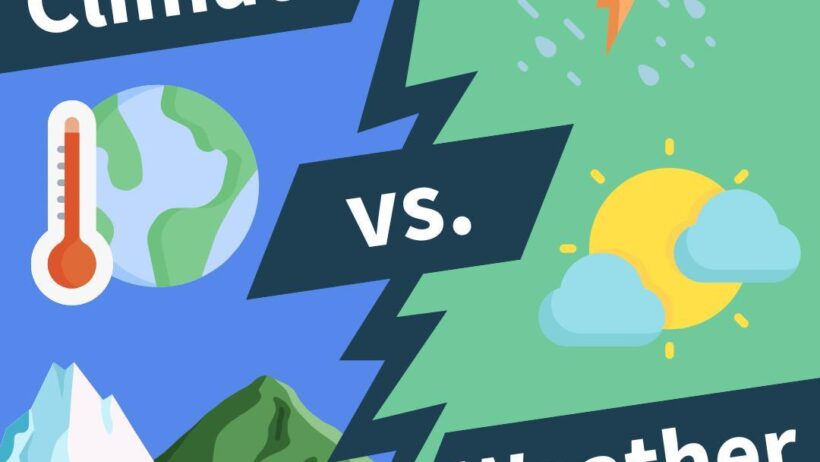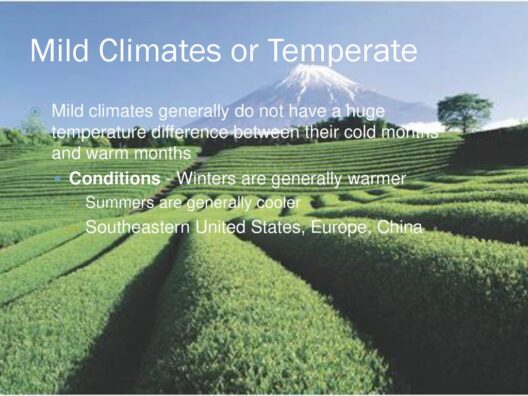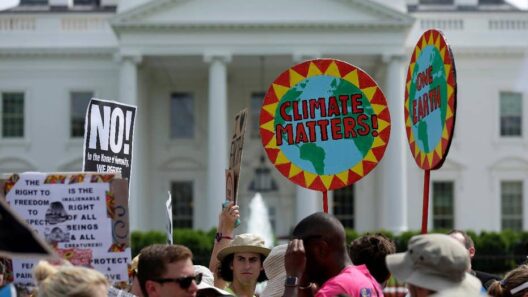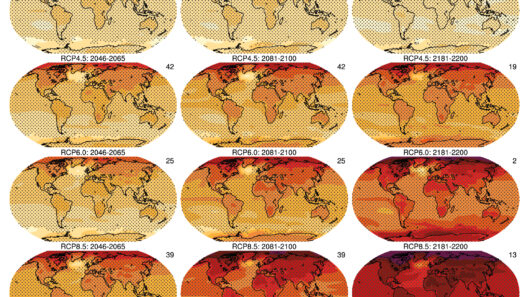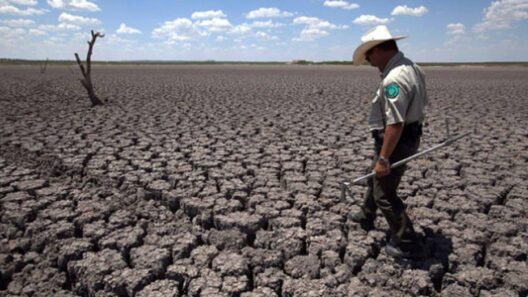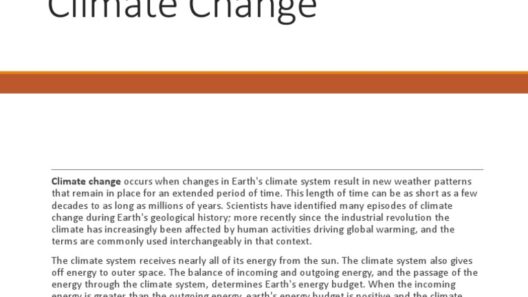For many, the terms “climate” and “weather” are often used interchangeably, yet they signify distinctly different phenomena. Understanding the distinction is crucial, not only for scientific literacy but also for informed decision-making regarding environmental policies, personal choices, and community initiatives. So, why does it matter to comprehend these concepts? Let us delve into the nuances between climate and weather and explore why this distinction is vital in combating climate change.
At its core, weather refers to the short-term atmospheric conditions in a specific place at a particular time. It encompasses various elements—temperature, humidity, precipitation, wind speed, and atmospheric pressure—that change from minute to minute or hour to hour. Picture a sunny morning, a sudden downpour in the afternoon, and a chilly evening breeze. These elements illustrate the variability and unpredictability inherent in weather systems, which can be influenced by numerous factors, including geographical location, time of year, and local ecosystems.
In stark contrast, climate refers to the long-term patterns and averages of weather over extended periods, typically 30 years or more. It denotes the comprehensive behavior of the atmosphere in a particular region, encompassing seasonal variations, trends, and anomalies. For instance, residents of a tropical region can expect a climate characterized by high temperatures and significant rainfall in specific months, while a desert region will present a vastly different climatic experience, marked by arid conditions and sparse precipitation.
So, why should the general populace care about this differentiation? The implications of confusing climate with weather can be profound. When individuals attribute immediate weather phenomena to climate change—such as a single heatwave or a cold snap—it reflects a misunderstanding of the broader shifts that take place over an extended period. While one might encounter unusually hot days, the crucial takeaway is that climate change is fundamentally about trends, not isolated instances.
Furthermore, grasping the distinction between these two concepts facilitates a more nuanced understanding of climate change itself. Climate change denotes a significant and lasting alteration in the Earth’s climate patterns, primarily driven by anthropogenic activities, including the burning of fossil fuels, deforestation, and industrial processes. Recognizing this reality underscores the urgency of our situation. While weather conditions may give rise to doubts about climate change (“It snowed last week, so climate change can’t be real!” is a common refrain), such assertions neglect the broader, scientifically-supported trends of global warming.
Consider the stark evidence compiled over decades: rising average temperatures, diminishing ice sheets in polar regions, increasing sea levels, and shifting habitats for flora and fauna. The overall trend illustrates that weather patterns are becoming more erratic due to climatic systems that are in disarray—hurricanes are more intense, drought conditions are prolonged, and the frequency of flooding events is increasing. Recognizing these phenomena as manifestations of climate change rather than simply anomalous weather events is essential for effective advocacy and mitigation strategies.
Moreover, understanding the distinction can shift the lens through which we view environmental responsibilities. Policymakers, communities, and individuals equipped with this knowledge can develop more purposeful actions for climate adaptation and mitigation. By bringing awareness to the cause-and-effect relationship between human activity and long-term climatic shifts, individuals can mobilize collective efforts to reduce carbon footprints, advocate for renewable energy sources, and foster sustainable practices within their communities.
Education plays a pivotal role in reshaping perceptions about climate change. Schools, local government agencies, and environmental organizations must prioritize enhancing public understanding of the climate-weather dichotomy. Not only does this empower citizens with knowledge, but it also cultivates a sense of urgency to combat climate change effectively. Individuals can engage in discussions about the environment more meaningfully, improving their capacity to influence peers and advocate for more sustainable policies.
Moreover, the social impact of climate change exacerbates inequalities and vulnerabilities among various demographic groups. Marginalized communities often bear the brunt of climate-related disasters, despite contributing the least to the problem. By fostering a comprehensive understanding of the difference between weather anomalies and climate trends, we can shed light on such injustices and galvanize support for those disproportionately affected by climate impacts. Advocacy efforts should converge towards creating a just and equitable climate dialogue that encompasses diverse voices and experiences.
Lastly, a compelling reason to differentiate between climate and weather lies in the realm of mental health. Increased natural disasters linked to climate change can have devastating psychological effects on affected populations. By fostering an awareness of the long-term nature of climate change, communities can better prepare not just for physical impacts but also for emotional and psychological resilience. Providing resources for mental health support in the wake of climate-related disasters becomes essential as the impacts of climate change become more visceral.
In conclusion, the distinction between climate and weather is not merely academic; it has profound implications that affect our understanding of environmental issues and our responses to them. Recognizing the nuances between short-term atmospheric occurrences and long-term climatic trends is vital for informed decision-making, effective advocacy, and building resilient communities. As our world grapples with the multifaceted challenges posed by climate change, shifting perspectives on these concepts holds immense potential for fostering meaningful engagement and instigating concrete action. Understanding the intricacies of climate versus weather invites us all to step into a role as informed citizens of our planet, empowered to enact change for the betterment of our future.



